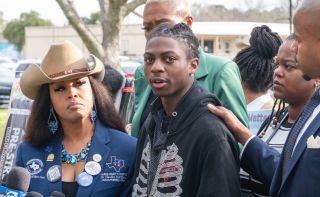Identity
Keep That Crown Held High: Protection on and in the Head
How to support youth resistance through key racial protective factors.
Posted February 29, 2024 Reviewed by Abigail Fagan
Key points
- It is psychologically beneficial for youth to develop a strong racial identity through individual expression.
- Families, peers, schools, and communities share messages with youth about the role of race in their lives.
- Racially affirming strategies yield positive outcomes in psychological, academic, and social domains.
James Baldwin famously wrote “Our crown has already been bought and paid for. All we have to do is wear it.” And yet, it seems that far too often for Black youth, the inherent dignity, worth, and value that Baldwin described is questioned or denied through racist policies and practices.
As clinical psychologists who conduct research and provide services primarily for Black youth and their families, we know just how psychologically beneficial it is for them to develop a strong racial identity through individual expression, especially when dominant cultural norms encourage conformity.

On February 22, Darryl George remained with his head held high despite a preposterous ruling in a long standing battle about whether he could attain an education with his protective styled hair in his Texas high school. The district policy asserts that students cannot wear hair past their eyebrows, earlobes, or collar, and, in upholding the ruling, the presiding district judge specified that the central argument was hair length, not style, and certainly not racism.
This interpretation has been rightfully criticized given that many of the styles up for debate within this legislation are long by nature, especially locs, which take time and subsequently length to complete the process of remaining independently locked. Even so, Darryl acknowledged the policy by intricately and regally styling his locs atop his head. Not ironically, the contested federal law–known as the CROWN Act–was designed to protect young people like Darryl from race-based hair discrimination.
Protection plays a big role in the lives of Black youth. Whether in hairstyle, given that their beautiful texture requires thoughtful attention and care, or in emotional guarding, given that their beautiful identity requires uniquely adaptive strategies and support, such protective styles deserve a place in school systems, communities, and yes, even on and in young people’s heads. Although we’ve been dismayed at the judicial process, we stand in awe of Darryl’s fortitude and sense of self through it all. In honor of Darryl’s protective hairstyle and power, especially during Black History Month, we want to showcase the three protective practices that Darryl has employed throughout this trial that we know are critical for youth of color.
1. Racial socialization
Racial socialization refers to the ways in which families, peers, schools, and communities share messages with youth about the role of race and culture in their lives and society. Since August, Darryl’s decision to maintain his locs has been supported by his mother, Darresha, who consistently asserts the cultural significance of the style to Darryl and in the media.
2. Racial identity
These socialization messages often inform the personal significance and meaning of race that youth internalize, known as racial identity. For example, Darryl indicated that wearing locs is “how I feel closer to my people. It’s how I feel closer to my ancestors. It’s just me. It’s how I am”. Darryl expressed his cultural roots through his hair.
3. Cultural orientation
Lastly, cultural orientation refers to the many ways that a person might adopt tenets of culture that align with their ethnic group, such as the value of interdependence or an emphasis on spirituality. In Darryl’s sentiment that he feels closer to his ancestors, he rejected the district superintendent’s prior statement that “when you are asked to conform… and give up something for the betterment of the whole, there is a psychological benefit.” Indeed, the collectivist orientation of African peoples notes the psychological value of individual expression while also drawing lessons from those who have traversed difficult journeys before him.
Decades of research have demonstrated that these racially affirming strategies promote positive outcomes across psychological (e.g., self-esteem), identity (e.g., self-concept), academic, and social dimensions. Even more, these tools also influence how Darryl experiences and manages discrimination, ultimately protecting him against negative outcomes associated with racism, like stress and trauma.
Darryl will surely face many challenges in his life, but the resistance he showcased in the face of the court system and naysayers—including his designated space of learning—will surely serve him well into adulthood. The education that he has received throughout this months-long effort to prevent him from learning has certainly taught him about the historical animus toward Black beauty but also the collective spirit of resisting in the face of adversity. To him and the many Black youth and families still fighting battles against blatant discrimination, know that there is support both seen and unseen. Keep that CROWN held high.
---
Dr. Riana Elyse Anderson is a clinical and community psychologist, associate professor at Columbia University's School of Social Work, and Fellow at Harvard’s Hutchins Center for African & African American Research.
Dr. Shawn C.T. Jones is a child and family clinical psychologist and assistant professor in the Department of Psychology at Virginia Commonwealth University.




